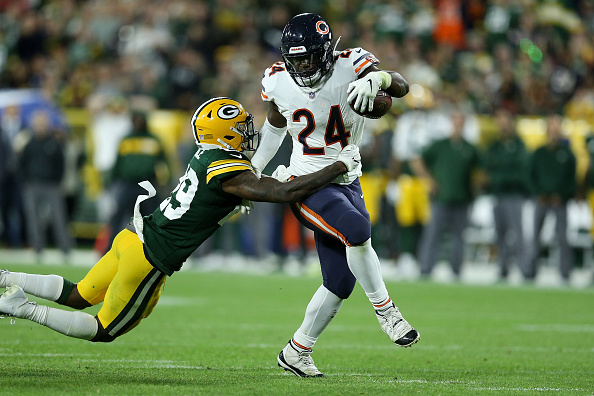Seattle Seahawks @ Chicago Bears
Chicago Bears -4.5
Games Total: 42.5
Russell Wilson is one of the best quarterbacks in the league, but this is probably the worst collection of talent he’s had at the skill positions since he came into the league. Fantasy players would love for Brandon Marshall , Will Dissly or Tyler Lockett to emerge as Wilson’s favorite target, but it seems far more likely he will be forced to spread the ball around and make plays with his legs
Brandon Marshall did look good in Week 1, though he topped the Seahawks with just six targets. Marshall caught one touchdown and had another negated by offensive pass interference, and that perfectly sums up his game. He is a big red zone target who pushes off on so many plays they cannot possibly all be called.
Both Chris Carson and Rashaad Penny had seven carries Week 1, and for all of the hype surrounding Penny, he managed just eight rushing yards. This will probably be a fairly even split in Week 2, though if anything, Carson may have earned a bigger share of the pie.
On the other side of the ball, Tarik Cohen was limited to just eight touches in Week 1, and the Bears would likely be much better off if he got about 10-12 touches in Week 2.
Surprisingly, Jordan Howard actually had one more target and two more receptions than Cohen Week 1. Cohen remains the better receiving back, but if the Bears insist on throwing Howard the ball, he could be even more valuable for fantasy than he has been the last few years.
Like the Seahawks, the Bears spread the ball around in the passing game, and that figures to continue. Allen Robinson led the team with seven targets, while Trey Burton had six targets of his own but just one reception. Burton and Allen both have more fantasy potential than they showed in Week 1, but neither seems particularly likely to get double-digit targets most weeks.
Pre-Game Props
1. The last non-kneeling, offensive play of the 1st Quarter is a running play (we'll leave this open until the 2:00 mark) 2.5/2.5
NO. Stop me if you have heard this before. NFL teams throw more than they run, even the teams that “get off the bus running,” to quote Lovie Smith. The Bears had 35 pass attempts and 27 in Week 1 despite seeming to refuse to throw the ball in the second half. The Seahawks had 33 pass attempts and just 16 carries in Week one. These two teams figure to run the ball more than most, but the odds are still better the last play of the 1st quarter will be a throw.
2. Both teams combine for 11 or more points in the first quarter yes (3.5x)/no (2x)
YES. If I was getting even odds, I’d say under 11 points in the first quarter, but I think it’s close enough that it makes sense to chase the better payout. The over/under for the game is 42.5, which comes out to 10.6 points per quarter.
3. Either team commits a turnover in the 1st quarter yes (3.6x)/no (1.9x)
YES. The Seahawks’ defense had three interceptions in Week 1, while their offense had two interceptions and a fumble. The Bears, for their part, had an interception and a fumble on defense and a fumble on offense. I expect plenty of turnovers in this game, and there is a decent enough chance at least one comes in the first quarter.
4. SEA gains 2 or more first downs on their opening drive yes (3.5x)/ no (2x)
NO. Seattle gained 2+ first downs on just two of their drives 15 drives in Week 1. Denver’s defense may be better than the Bears’, but not that much better. Even the bigger payout isn’t enough to make me go with Yes.
5. CHI reaches midfield on their opening drive yes (2.2x)/no (3.3 x)
NO. I would be tempted to say No even if the payouts were even. The Bears crossed midfield on five of their 10 drives in Week 1, and I don’t think I expect the Bears to be a whole lot better against Seattle this week.
6. The first offensive play of the 1st quarter gains 3 or more yards yes (3x)/no (2x)
YES. In the other WinView NFL contests I have played, the over/under for the first offensive play of the first quarter was four yards. I like that the threshold has gotten lower while the payout remains favorable.

